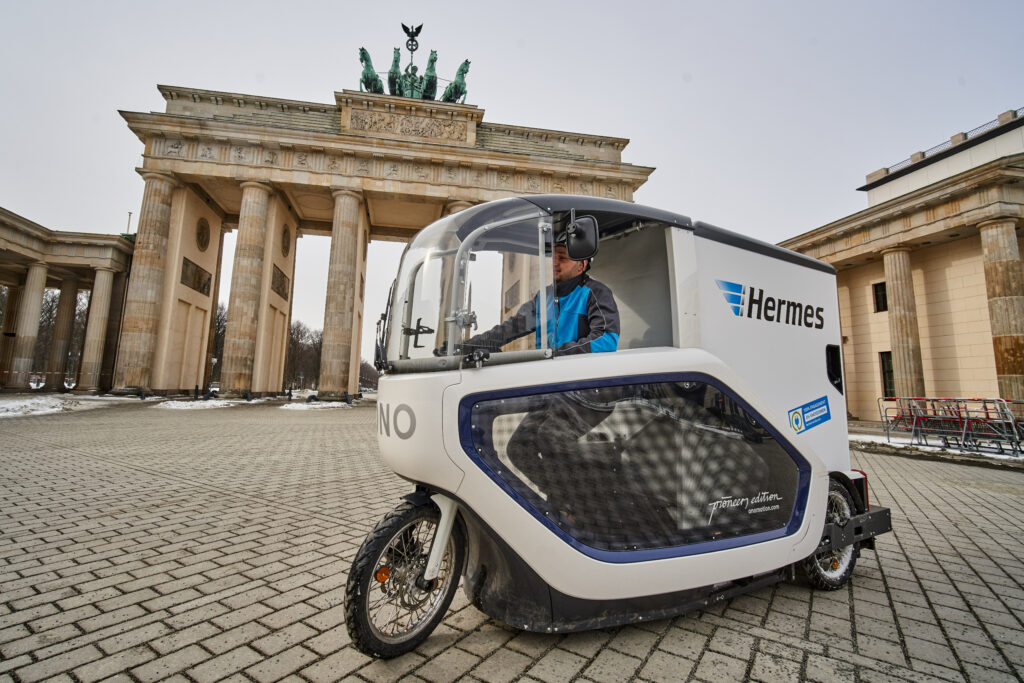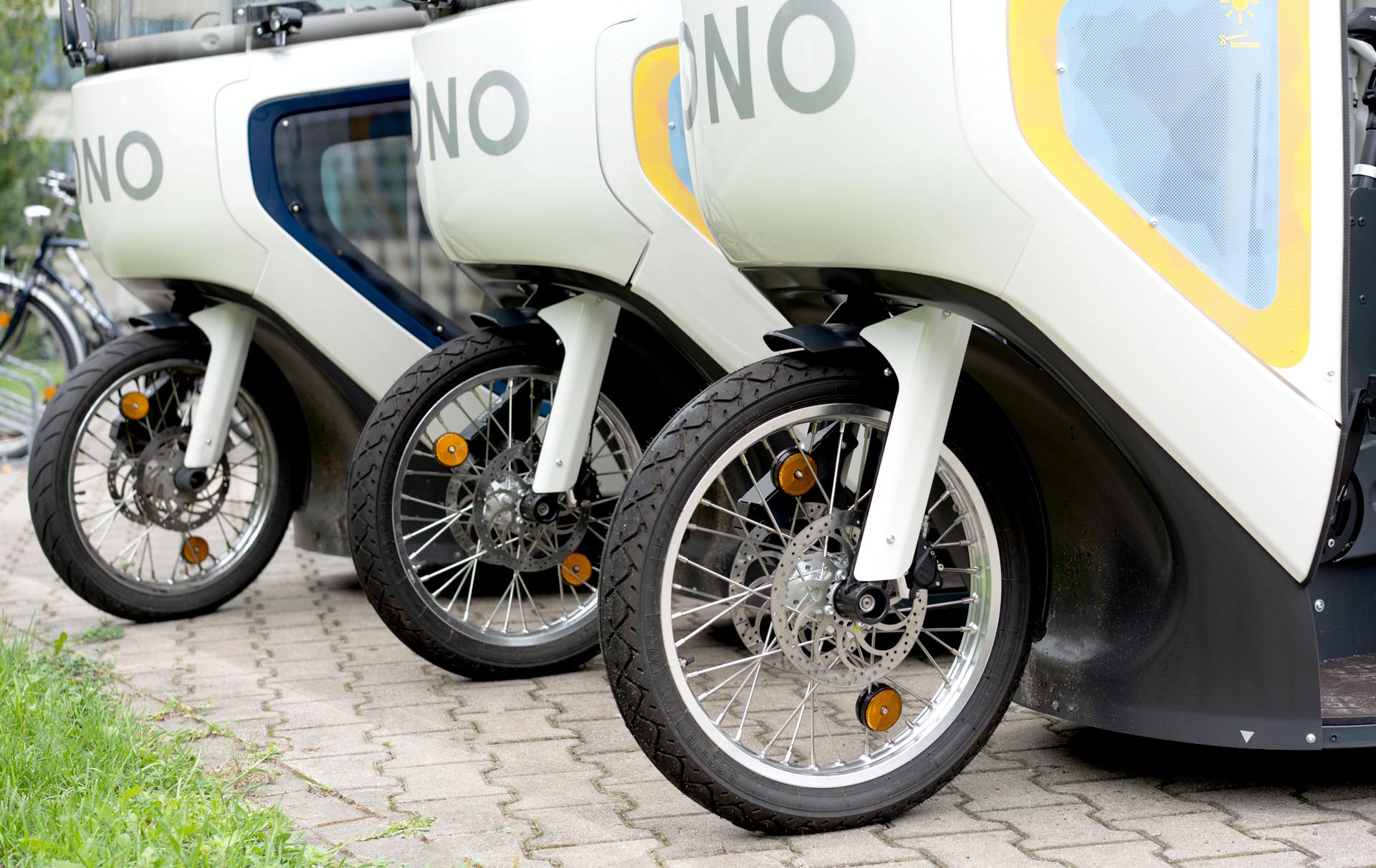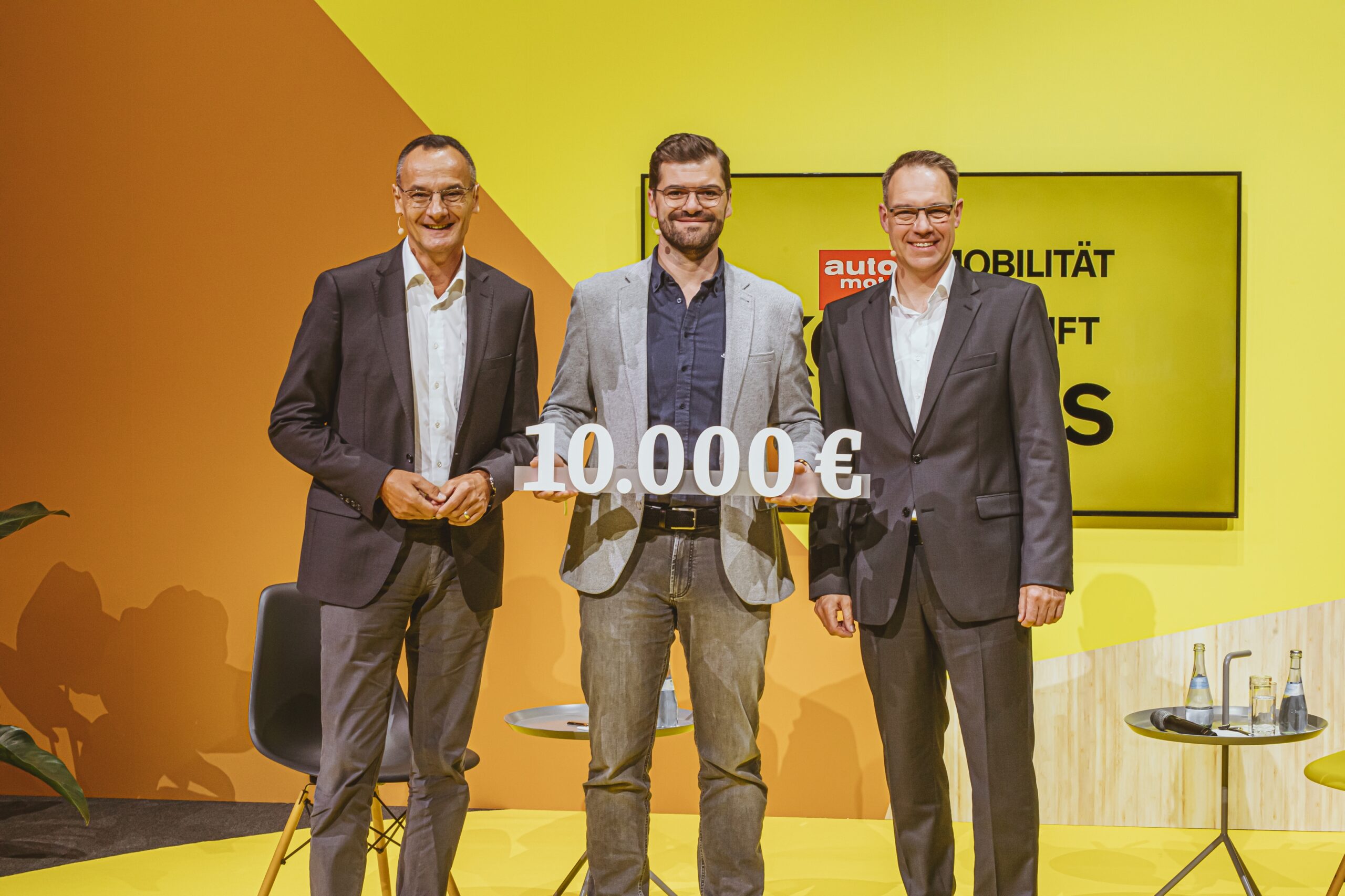CITY LOGISTICS: HERMES RELIES ON ONO-CARGOBIKES IN BERLIN

Trade and logistics service provider delivers parcels with the electric mini transporter
Hermes Germany GmbH wants to promote the transport revolution and sees great potential in e-bikes for city logistics. That is why the trade and logistics service provider is cooperating with the Berlin-based provider ONOMOTION GmbH. Over the next few weeks, 18 new Cargobikes will be used for door-to-door deliveries in densely populated districts of the capital. Nine of them are already delivering parcels with zero emissions. Following the successful completion of the pilot project, Hermes will be using the vehicles in series production for the first time. During the pilot phase in summer 2019, the Pedal Assisted Transporter (PAT) met all of the logistics provider’s technical requirements for parcel delivery, meaning that ONO is now an important component of Hermes Germany’s “Urban Blue” mobility concept. The PAT is a commercial vehicle that is legally considered a bicycle, but is clearly oriented toward vans due to its design and functionality with a 220-kilogram payload. In this way, ONO is effectively creating a new vehicle class for the “last mile”. With “Urban Blue,” Hermes is pursuing the goal of zero-emission deliveries to Germany’s 80 largest inner cities by 2025. “For us, cargo bikes are a sensible addition to vans – especially in urban areas. ONO has created a suitable offer for a long-term test that fits really well with our development,” says Michael Peuker, Sustainability Manager at Hermes Germany GmbH.
In conjunction with the microdepot in the Prenzlauer Berg district of Berlin, the pilot phase demonstrated what the twelve-month long-term test will now deepen: Only very large and bulky parcels still need to be delivered by a larger van. The goal is for a cargo bike to replace a van with a conventional diesel drive. ONO offers the three-wheeled, pedal-assisted commercial vehicle with two electric motors with a leasing agreement and flexible terms. The agreement includes, among other things, maintenance, comprehensive insurance, any wear-and-tear repairs, and access to battery exchange machines.
Detachable container-module is a great advantage
Quiet and emission-free, fast and agile: During the four-week pilot phase, the PAT handled deliveries within a radius of three to five kilometers. Depending on the size of the parcels, Hermes delivery staff loaded 80 to 100 items into the detachable cargo unit. The pilot project was intended to demonstrate that converting a conventional delivery vehicle to the cargo bike is feasible for the logistics industry. “In the practical test, the commercial vehicle convinced us. The Cargobike has many plus points in terms of functionality and meets our high requirements for emission-free parcel delivery,” says Peuker. According to him, there are only nuances to be improved on the vehicle. The weatherproof, narrow cargo bike impressed in the test primarily due to its load volume of more than two cubic meters, a payload of 220 kilograms, a range of 30 kilometers per battery charge and pedal assistance of up to 25 kilometers per hour. The detachable cargo unit in particular proved to be a major advantage, as the cargo container could be ready picked before delivery to the microdepot. “This also allowed us to test how it affects delivery if the hub has to be approached again within a tour to load a new container. Since this container had already been picked, the driver was able to continue without having to wait,” says Thomas Lange, team leader for last mile management at Hermes.
Parking issues and long walking distances are alleviated
For Hermes Germany GmbH, whose stated goal is to continuously reduce the transport emissions it generates, particularly in inner cities, ONO’s electric city transporter offers further advantages. “We are allowed to drive on bike paths, past traffic jams as well as in many one-way streets in both directions. That makes operation noticeably easier,” Peuker explains. It also alleviates the parking problems that deliverers have to contend with, for example, due to a lack of loading zones in city centers. In addition, the walking distances are reduced for the delivery staff
ONO and Hermes: in constant exchange
ONOMOTION and Hermes have been in constant exchange for three years now. In that time, a lot of movement has occurred in the market. Earlier tests showed, in terms of quality and cost, that further development was needed. “Our hope now rests on a new generation of cargo bikes that need to improve in terms of quality and handling,” says Peuker.
The test phase also proved profitable for ONO
“Based on a suggestion from a test driver, we installed a net in our cargo unit to help users separate packages that could not be delivered from those that still need to be dropped off,” said Luise Braun, ONO pilot project coordinator.
Network in cargo unit will help separate packages in the future
Martin Schmidt, Managing Director of Cycle Logistics GmbH, is a general contractor in Prenzlauer Berg who delivers parcels for Hermes exclusively on cargo bikes. In summer 2019, his employees also used the PAT, among other things. The feedback was consistently positive, he said. “Because of the good pedal assistance and the ergonomic seat, my employees were not as exhausted at the end of the tours as they were after riding other cargo bikes,” says Schmidt. The reverse gear, which by no means every e-load bike has, also met with great approval. For the managing director of Cycle Logistics GmbH, the trend in emission-free delivery is clearly moving in the direction of exchangeable freight containers. “In addition to microdepots, several smaller nanodepots along the route would be ideal, at which drivers would simply have to exchange empty containers for loaded and ready-picked ones. Such nanodepots could be lockable containers in backyards,” Schmidt says.






